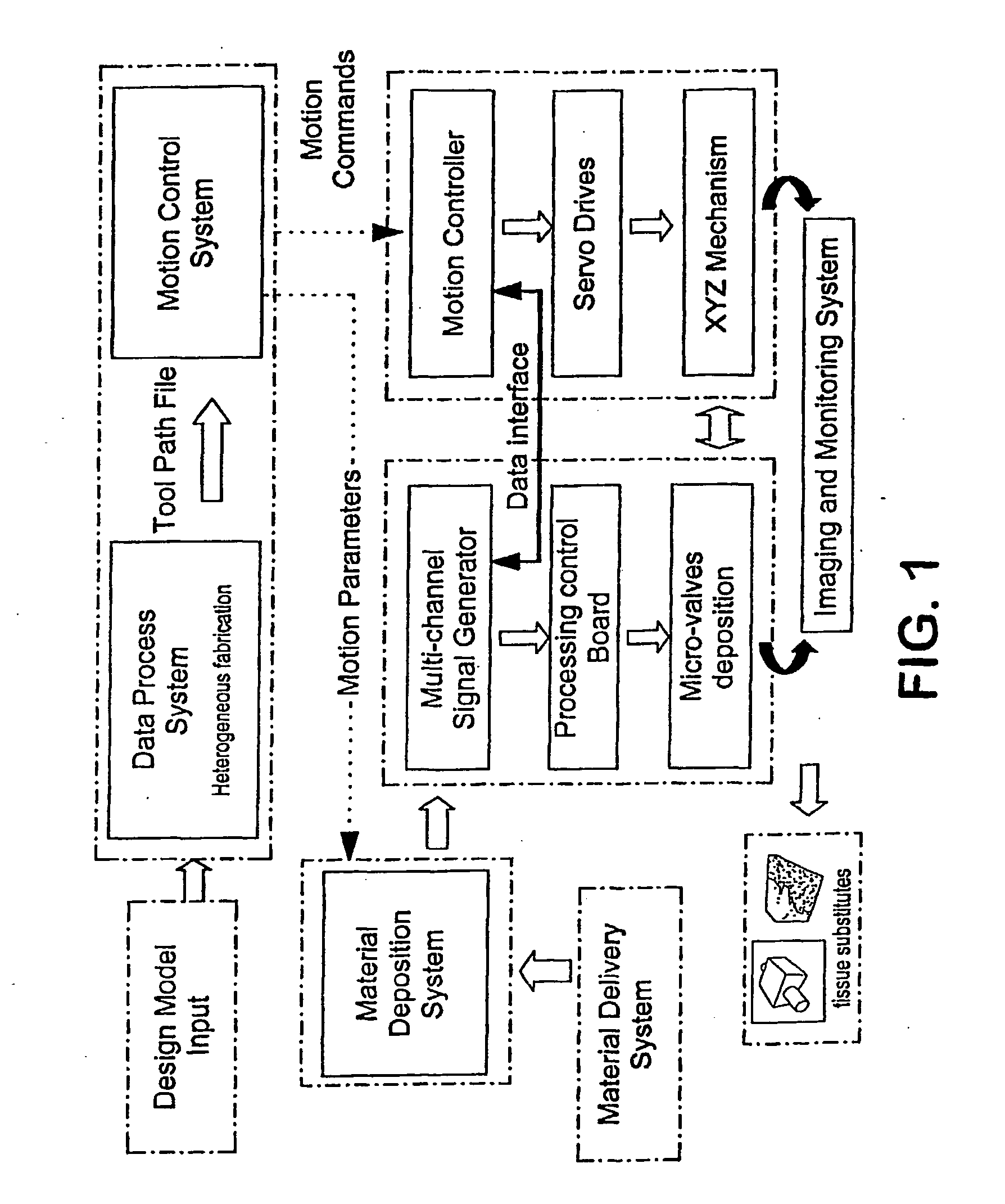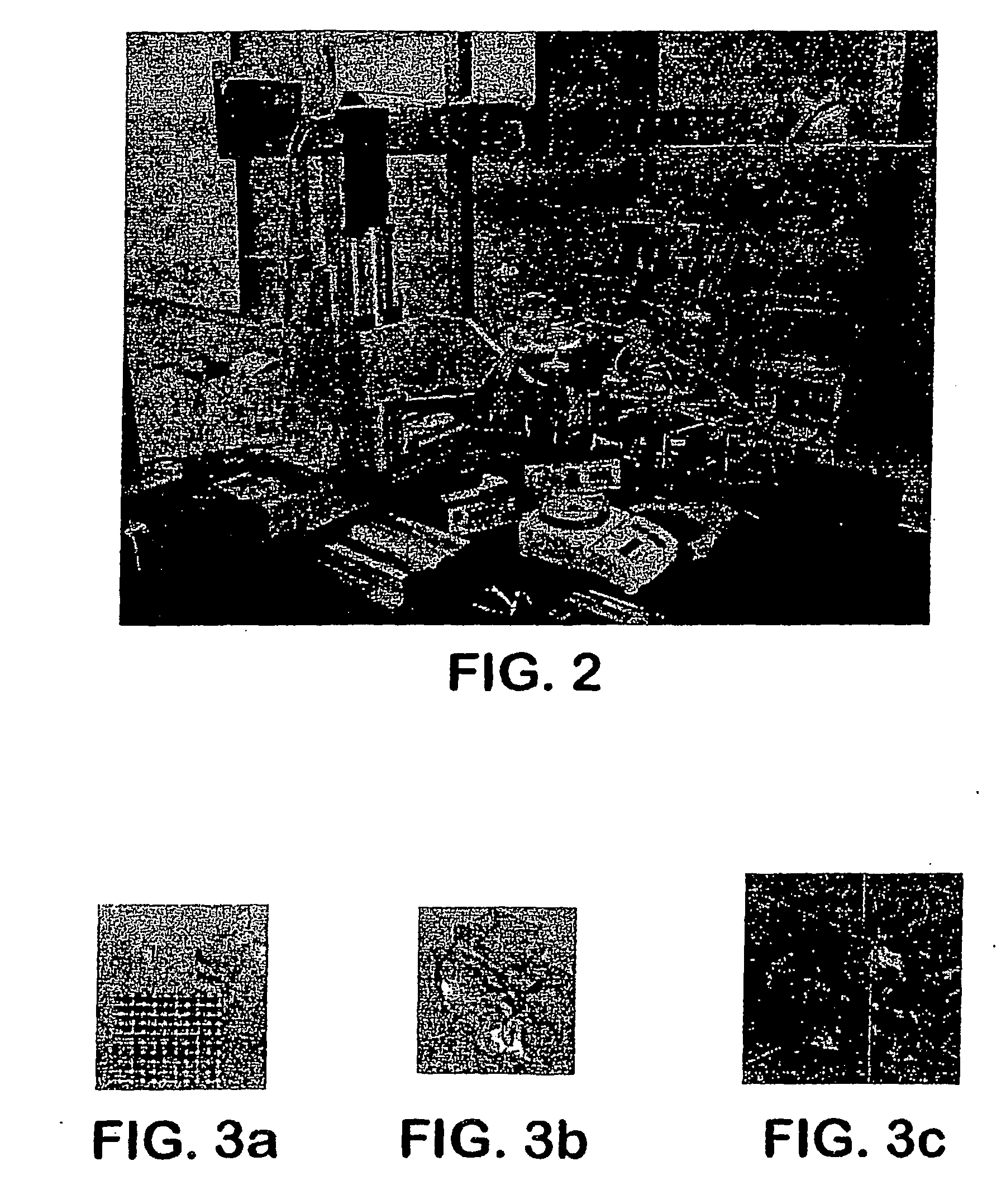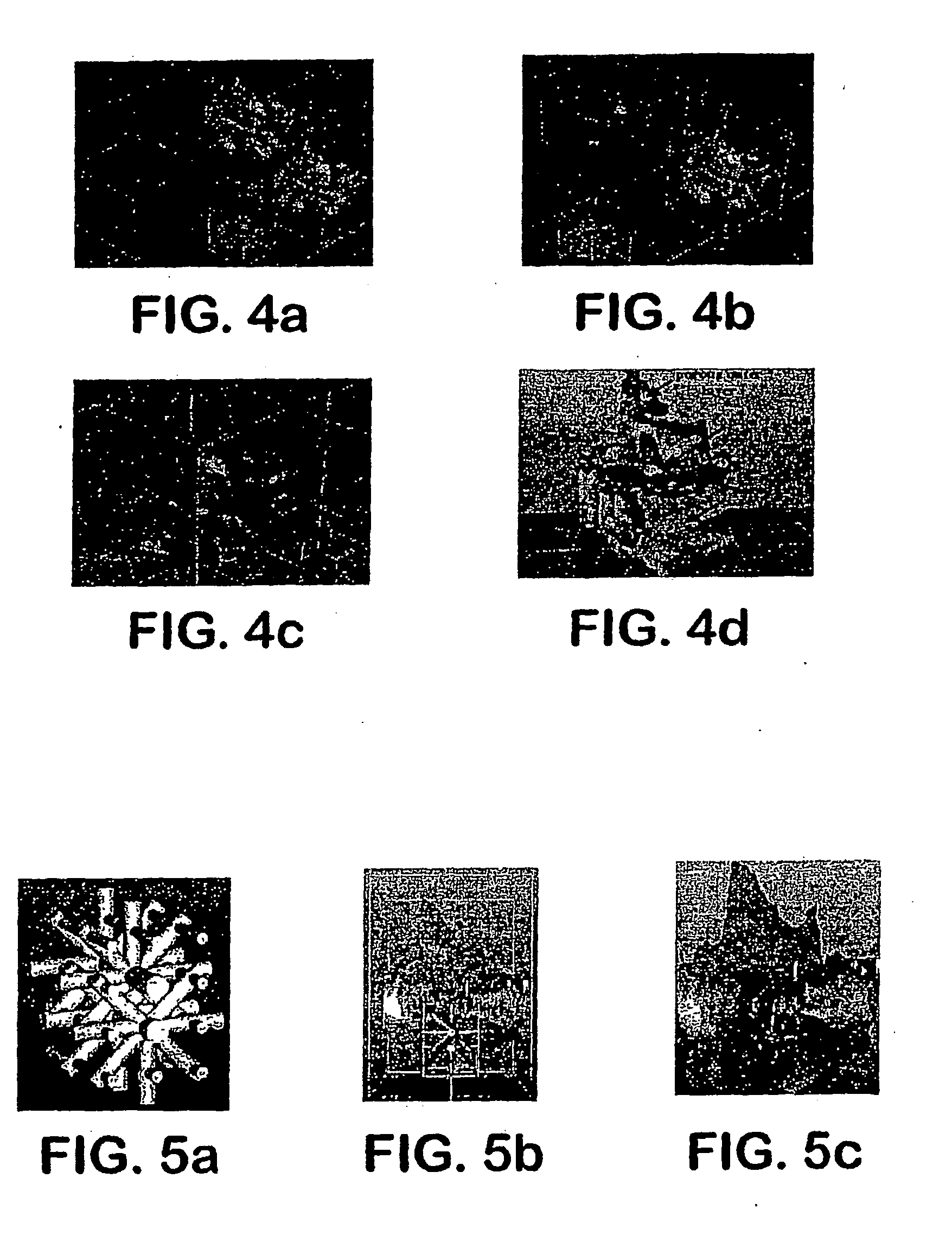Method and apparatus for computer-aided tissue engineering for modeling, design and freeform fabrication of tissue scaffolds, constructs, and devices
a computer-aided tissue and engineering technology, applied in the field of method and apparatus for computer-aided tissue engineering for modeling, design and freeform fabrication of tissue scaffolds, constructs, devices, etc., can solve the problems of difficult creation of heterogeneous cellular structures, inability to achieve the complexity level of an organ using standard techniques, and limited techniques in their level of sophistication
- Summary
- Abstract
- Description
- Claims
- Application Information
AI Technical Summary
Benefits of technology
Problems solved by technology
Method used
Image
Examples
examples
[0069] The apparatus depicted in FIG. 2 was used to construct various three-dimensional biopolymer based tissue scaffolds.
[0070] For example, shown in FIG. 7 are, several three-dimensional hydrogel scaffolds (10 layers, calcium alginate), extruded as a 3% (w / v) alginate filament within a cross-linking solution (FIG. 3a) and simple alginate geometrical pattern (FIG. 3b). Depending upon the size of the syringe nozzle, the pressures used, and the type of deposition method (extrusion), alginate filaments within the 30-40 micron range (FIG. 3c) were created for 3% (w / v) sodium alginate solution with a 5% (w / v) calcium chloride cross-linking solution, at 0.50 psi.
[0071] Further, cell deposition / extrusion studies were conducted by extruding alginate hydrogel mixed with human endothelial cells at a cell concentration: 750,000 cells / ml with sodium alginate: 1.5% (w / v), nozzle: EFD 200 μm at pressure: 2 psi, deposition speed: 10 mm / s, and calcium chloride: 5% (w / v) (see FIG. 4). Experiments...
PUM
| Property | Measurement | Unit |
|---|---|---|
| Biological properties | aaaaa | aaaaa |
| Deposition rate | aaaaa | aaaaa |
| Bioactive | aaaaa | aaaaa |
Abstract
Description
Claims
Application Information
 Login to View More
Login to View More - R&D
- Intellectual Property
- Life Sciences
- Materials
- Tech Scout
- Unparalleled Data Quality
- Higher Quality Content
- 60% Fewer Hallucinations
Browse by: Latest US Patents, China's latest patents, Technical Efficacy Thesaurus, Application Domain, Technology Topic, Popular Technical Reports.
© 2025 PatSnap. All rights reserved.Legal|Privacy policy|Modern Slavery Act Transparency Statement|Sitemap|About US| Contact US: help@patsnap.com



